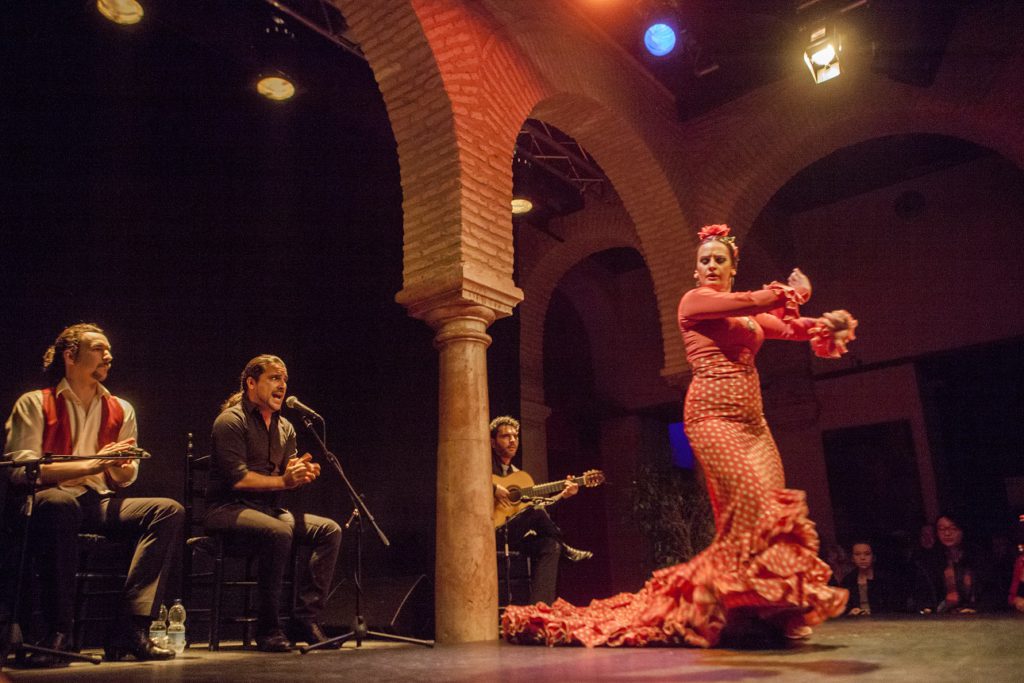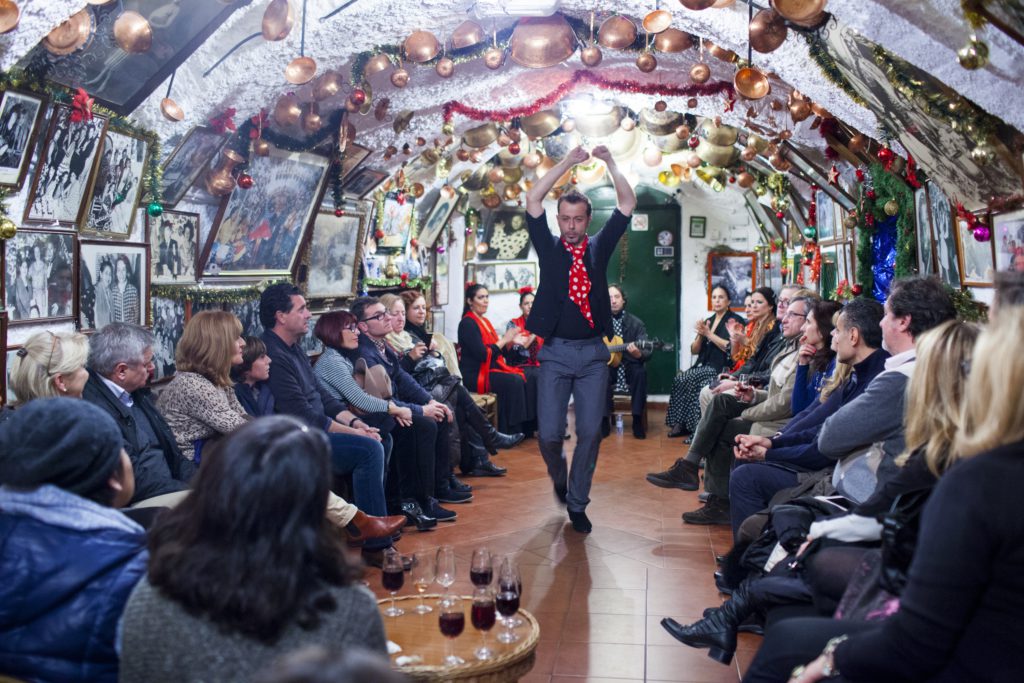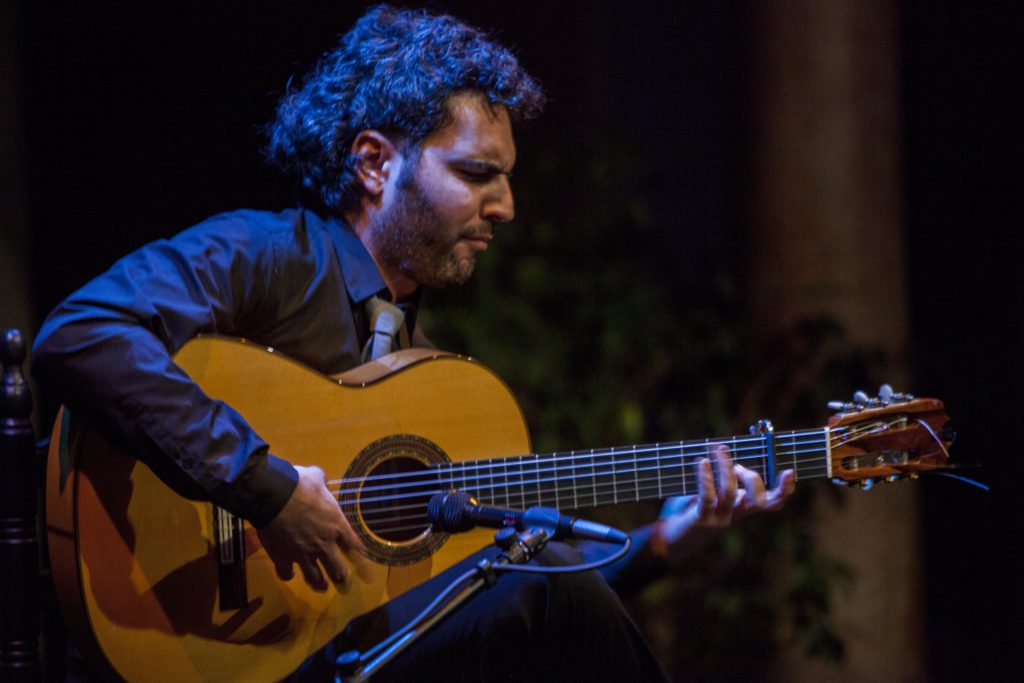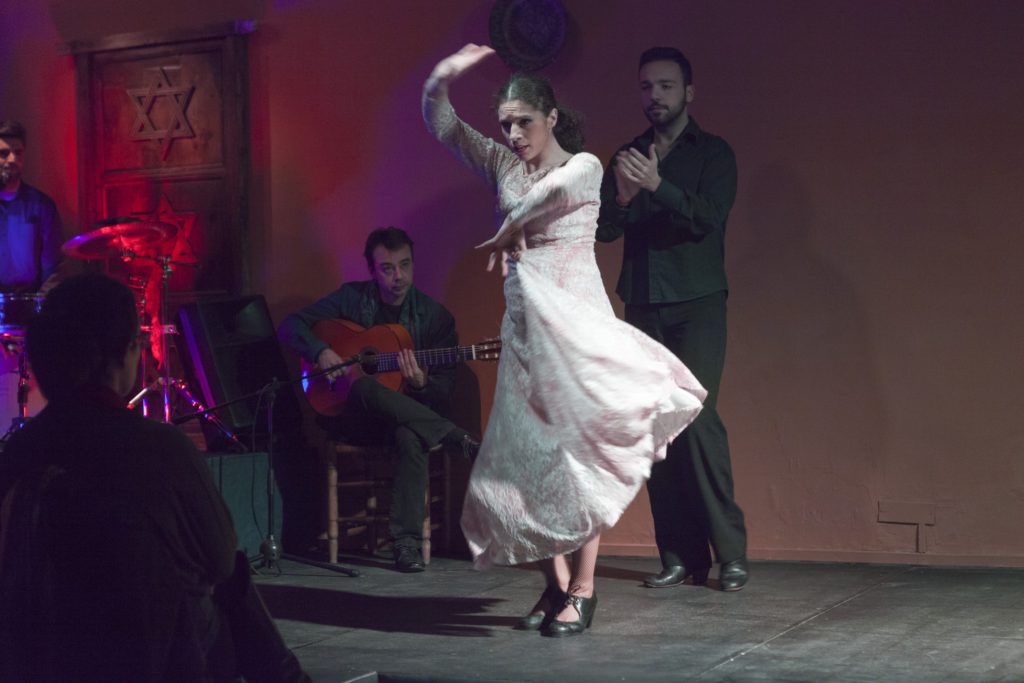El Flamenco
Element Included in the UNESCO List since 2010. Inscription: 5.COM 6.39
Flamenco is a Spanish musical genre that developed in Andalusia, especially in the areas of Cadiz and its ports, San Fernando, Jerez de la Frontera, Seville and some towns of its province such as Lebrija and Utrera, Huelva, Granada and Cordoba, as well as in some areas of Murcia, Castile-La Mancha and Extremadura. Flamenco is an art form that is the result of the influence and crossbreeding of various cultures such as Gypsy, Arab, Christian and Jewish. It combines music, song and dance. Nowadays, this artistic expression is appreciated and practised all over the world. Known for its emotional intensity, for the outpouring of feelings that the artists imprint on their performances, flamenco was declared Intangible Cultural Heritage of Humanity by UNESCO in 2010.
It is believed that the flamenco genre emerged at the end of the 18th century in the towns and villages of Lower Andalusia, with Jerez de la Frontera standing out as the first written vestige of this art form. There are hypotheses that point to the influence on flamenco of dance varieties from the Indian subcontinent -the place of origin of the gypsy people- such as the kathak dance. There is also speculation about the African influence on the rhythms and choreographies of flamenco.
As for the etymology of the term, there is no unanimity to this respect, although there is a fairly acceptable theory that the term flamenco derives from the Andalusi term ‘fellah min gueir ard’, an expression that means something like “landless Moorish peasant”.
If there is one culture that is directly associated with flamenco, that is the gypsy culture, perhaps because it has been the one that has contributed most to the development of this art, although it has not been the only one, as it even receives African and Caribbean influences, in addition to the Arab, Jewish and Christian ones mentioned above.
Although flamenco originally consisted only of singing, over time dance and music, mainly guitar, were introduced. The singing associated with flamenco music is influenced by the folk songs and the traditional music of Andalusia, the Gregorian chants of the Jewish synagogues, Arabic sounds and African rhythms.
Regarding flamenco dance, we can also find the cultural heritage of traditional dances from different corners of Spain, African dances or the Indian dances that the gypsies brought to Andalusia. As for the contribution of each culture to flamenco dance and music, according to José Luis Navarro, historian and author of the book Historia del baile flamenco, the grace, elegance and freshness are Andalusian influences, the temperament and the interpretative grit have the gypsy stamp and finally, the swagger and sensuality are influenced by the African cultures.
But if there is something that identifies flamenco, it is its power to transmit feelings, as the first flamenco artists used this art form to express their emotional experiences. Flamenco lyrics are full of pain, joy, passion, anguish, love and heartbreak, feelings that are reflected in the different palos (styles), the best known of which may be bulerías, soleá, alegrías, seguiriyas, fandangos, tangos and sevillanas, although there are over 50 of them recorded.

Museo del Flamenco. Andalucía Turismo y Deporte. www.andalucia.org

Zambra María la Canastera. Andalucía Turismo y Deporte. www.andalucia.org

Museo del Flamenco. Andalucía Turismo y Deporte. www.andalucia.org

Palacio de los Olvidados. Andalucía Turismo y Deporte. www.andalucia.org
Ballet Flamenco Andalucía (‘El maleficio de la mariposa’)

